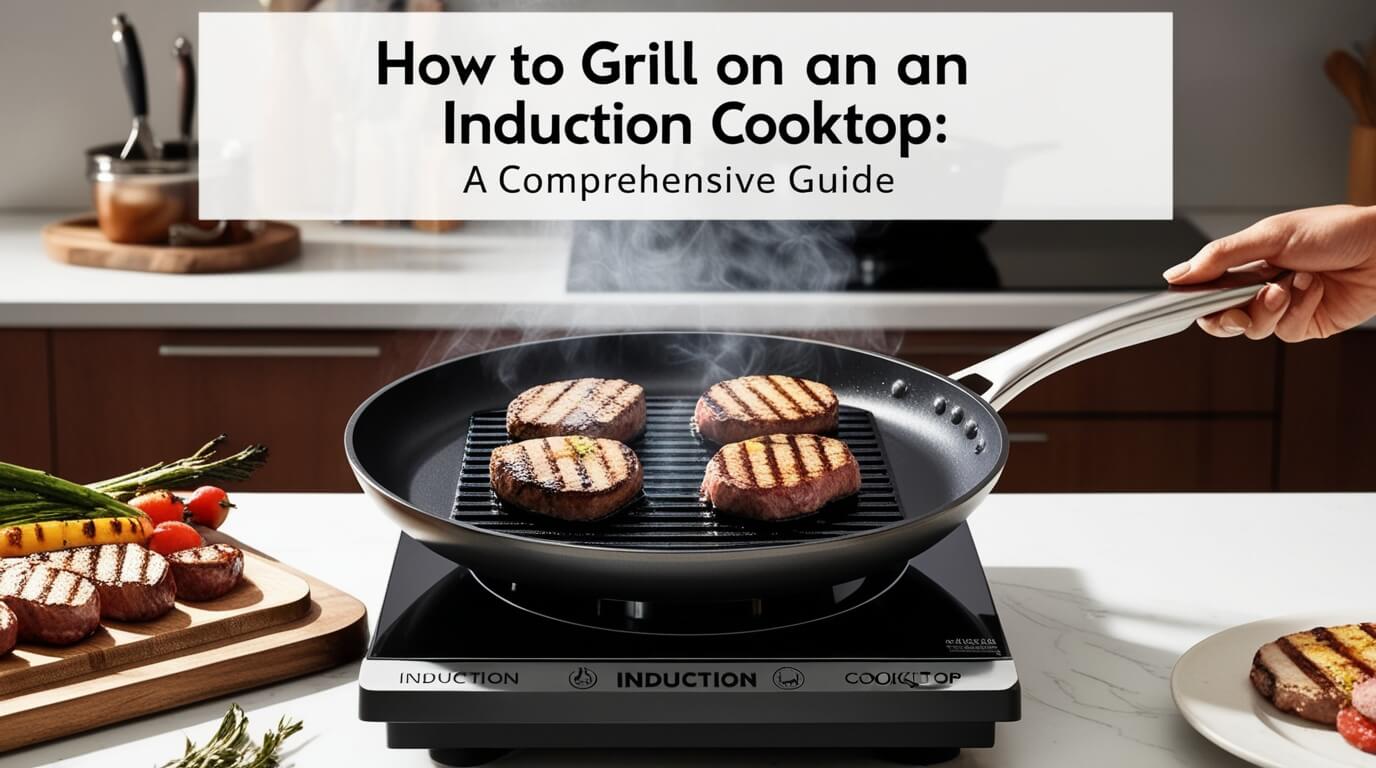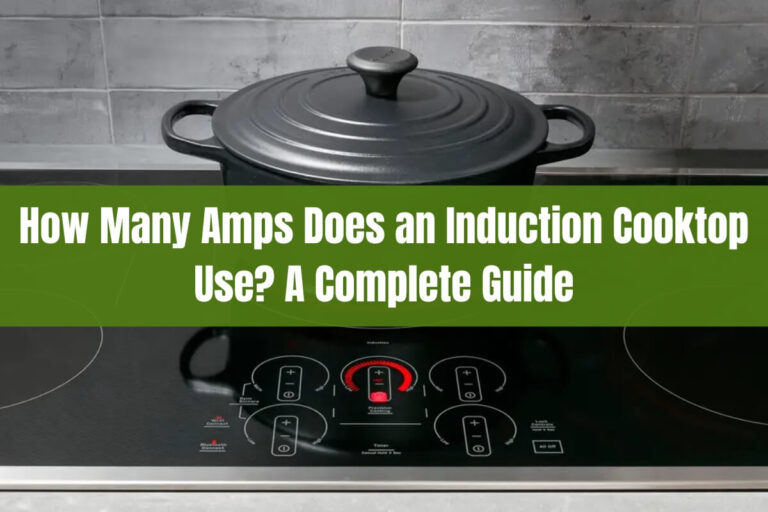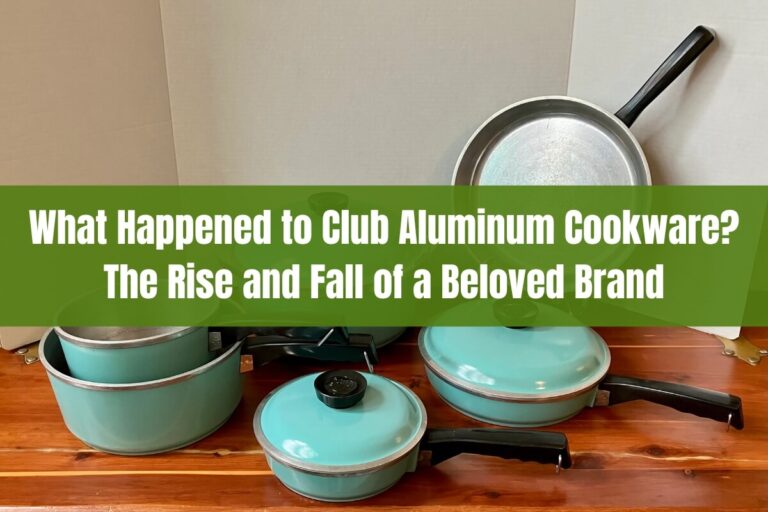
Grilling is a beloved cooking method that imparts a smoky, charred flavor and those coveted grill marks that make food irresistible. Traditionally, grilling has been associated with outdoor cooking on a charcoal or gas grill. However, with the rise of induction cooktops, indoor grilling has become a convenient and accessible option. Can you really grill on an induction cooktop?
The short answer is yes, you can grill on an induction cooktop with the right cookware and techniques.
In this comprehensive guide, we’ll explore the world of induction grilling, covering everything from the types of grill pans to use, step-by-step instructions, tips and tricks, recipe ideas, and a comparison with other grilling methods. Whether you’re a seasoned grill master or a novice looking to elevate your indoor cooking game, this article will equip you with the knowledge to achieve delicious grilled flavors right in your kitchen.
What is an Induction Cooktop?
Before we dive into grilling on an induction cooktop, let’s first understand how this innovative cooking technology works. Unlike traditional gas or electric stoves, which generate heat through thermal conduction or radiation, induction cooktops use electromagnetic induction to directly heat the cookware.
Beneath the smooth glass-ceramic surface lies a copper coil that creates a magnetic field. When you place induction-compatible cookware (made of ferromagnetic materials like cast iron or magnetic stainless steel) on the cooktop, the magnetic field induces an electric current in the cookware, causing it to heat up rapidly and efficiently.
One of the key advantages of induction cooking is its energy efficiency. Since the heat is generated directly in the cookware, there is minimal heat loss to the surrounding air, making it more energy-efficient than gas or electric stoves. Additionally, induction cooktops offer precise temperature control, allowing you to adjust the heat instantly and maintain consistent cooking temperatures.
Can You Grill on an Induction Cooktop?
While induction cooktops are known for their versatility in cooking various dishes, grilling might not be the first thing that comes to mind. However, with the right cookware, you can achieve delicious grilled flavors and those iconic grill marks right on your induction cooktop.
The key to successful induction grilling lies in the use of induction-compatible grill pans or griddles. These specialized cookware pieces feature a ridged cooking surface similar to a traditional grill pan, but with a flat bottom that allows for efficient heat transfer on induction cooktops.
Types of Induction Grill Pans
When it comes to induction grill pans, you have several options to choose from, each with its own set of advantages and considerations:
- Cast Iron Grill Pans: Cast iron is an excellent choice for induction grilling. These pans are durable, retain heat well, and develop a natural non-stick patina over time. However, they can be heavy and require proper seasoning and maintenance.
- Stainless Steel Grill Pans: Stainless steel grill pans are lightweight and easy to maintain. Look for pans with a tri-ply or multi-ply construction, which includes a ferromagnetic layer to ensure compatibility with induction cooktops.
- Non-stick Grill Pans: For easy food release and cleanup, non-stick grill pans can be a convenient option. However, it’s important to choose pans specifically designed for induction cooking, as some non-stick coatings may not be compatible.
- Reversible Grill/Griddle Pans: These versatile pans offer two cooking surfaces in one: a ridged grill side and a flat griddle side. They are perfect for grilling as well as cooking pancakes, eggs, or other griddle-friendly foods.
When selecting an induction grill pan, consider factors such as size (to match your cooktop burner), weight, and ease of cleaning. Additionally, ensure that the pan is labeled as induction-compatible or use the magnet test to confirm its compatibility.
Tips for Grilling on an Induction Cooktop
Grilling on an induction cooktop requires some specific techniques to achieve the best results. Here are some tips to keep in mind:
- Preheat Gradually: Unlike gas or electric stoves, induction cooktops heat up rapidly. To prevent thermal shock and potential damage to your cookware, preheat your grill pan gradually with a bit of oil. When the oil shimmers and ripples, your pan is ready for grilling.
- Match Burner and Pan Size: Choose a grill pan that is closest in size to the burner you’re using. This ensures even heating and prevents potential issues with the cooktop not detecting the cookware properly.
- Lift the Pan, Don’t Slide: To avoid scratching the smooth glass surface of your induction cooktop, lift the grill pan when moving it instead of sliding it across the surface.
- Use Oven Mitts: The handles of grill pans can get extremely hot on induction cooktops. Always use oven mitts or pot holders when handling the pan to prevent burns.
- Avoid Excessive Movement: For proper searing and those iconic grill marks, resist the urge to move the food too much once it’s on the hot grill pan. Allow it to develop a nice char before flipping or turning.
Step-by-Step Guide to Grilling on an Induction Cooktop
Now that you have the right cookware and tips in hand, let’s walk through the step-by-step process of grilling on an induction cooktop:
- Choose an Induction-Compatible Grill Pan: Select an induction-compatible grill pan or griddle that suits your needs and matches the size of your cooktop burner.
- Preheat the Grill Pan: Place the grill pan on the induction cooktop and preheat it gradually with a bit of oil or cooking spray. Start at a lower temperature setting and gradually increase the heat until the oil shimmers and ripples.
- Adjust the Temperature Setting: Depending on the type of food you’re grilling, adjust the temperature setting to the desired level. For high-heat grilling, such as searing steaks or grilling vegetables, use a higher temperature setting. For more delicate items, like fish or chicken, a medium-high setting may be more appropriate.
- Add the Food to the Hot Grill Pan: Carefully place the food on the preheated grill pan, being mindful of any splattering oil. Leave enough space between the items to allow for proper browning and grill marks.
- Flip or Turn the Food: After the food has developed a nice char on one side, use tongs or a spatula to flip or turn it over. Be gentle to avoid disturbing the grill marks or causing the food to stick.
- Let the Food Rest: Once the food is grilled to your desired doneness, transfer it to a clean plate or cutting board and let it rest for a few minutes before serving. This resting period allows the juices to redistribute, resulting in a juicier and more flavorful grilled dish.
Remember, induction cooktops heat up quickly, so keep a close eye on your food to prevent overcooking or burning.
Benefits of Grilling on an Induction Cooktop
Grilling on an induction cooktop offers several advantages over traditional grilling methods:
- Fast Heating and Temperature Control: Induction cooktops heat up rapidly and provide precise temperature control, allowing you to adjust the heat instantly and maintain consistent cooking temperatures.
- No Open Flame or Gas Emissions: With induction grilling, there is no open flame or gas emissions, making it a safe and environmentally friendly option for indoor grilling.
- Easy to Clean: The smooth glass surface of an induction cooktop is easy to clean, as spills and splatters can be wiped away without the hassle of cleaning grates or burners.
- Energy Efficiency: Induction cooking is highly energy-efficient, as the heat is generated directly in the cookware, minimizing heat loss to the surrounding air.
Recipes to Try on Your Induction Grill Pan
Now that you’ve mastered the art of induction grilling, it’s time to put your skills to the test with some delicious recipes:
- Grilled Vegetables: Grilled zucchini, bell peppers, asparagus, and other fresh veggies make for a flavorful and healthy side dish or main course.
- Grilled Proteins: Sear juicy steaks, chicken breasts, or fish fillets to perfection on your induction grill pan.
- Panini Sandwiches: Transform your grill pan into a panini press and create delicious grilled sandwiches with your favorite fillings. The ridged surface will give you those coveted grill marks on the bread.
- Quesadillas: Whether you’re craving a classic cheese quesadilla or something more adventurous with grilled veggies or protein, your induction grill pan is the perfect tool for creating crispy, melty quesadillas.
Induction Cooktop Compatibility and Safety
Before you can start grilling on your induction cooktop, it’s essential to ensure that your cookware is compatible with the induction technology. Here’s how to check:
- Look for Induction-Compatible Labels: Many cookware manufacturers clearly label their products as “induction-compatible” or “suitable for induction cooktops.”
- Perform the Magnet Test: If the labeling is unclear, you can perform a simple magnet test. Place a strong magnet on the bottom of the pan. If the magnet firmly sticks, the cookware is induction-compatible.
In addition to cookware compatibility, induction cooktops come with built-in safety features that make them a great choice for indoor cooking:
- Automatic Pan Detection: Induction cooktops will only generate heat when they detect a compatible pan on the cooking surface, preventing accidental heating and energy waste.
- Cool Surface: Since the heat is generated directly in the cookware, the cooktop surface itself remains relatively cool, reducing the risk of burns or fires.
- Automatic Shut-Off: Most induction cooktops have an automatic shut-off feature that kicks in if the cookware is removed or if the temperature gets too high, preventing overheating or fire hazards.
Always follow the manufacturer’s instructions and safety guidelines when using your induction cooktop and grill pan.
Comparison with Other Grilling Methods
While induction grilling offers convenience and versatility, it’s important to understand how it compares to other grilling methods:
- Induction vs. Gas Grilling: Gas grills, whether propane or natural gas, provide that authentic smoky flavor imparted by the open flame. However, induction grilling is a safer and more energy-efficient option for indoor grilling.
- Induction vs. Electric Grilling: Electric grills offer a similar indoor grilling experience to induction cooktops, but they may not heat as quickly or evenly as induction technology.
- Induction vs. Outdoor Charcoal/Pellet Grilling: Nothing quite replicates the smoky, charred flavor of food grilled over charcoal or wood pellets. However, induction grilling is a convenient alternative for those times when outdoor grilling isn’t possible or practical.
Ultimately, the choice between induction grilling and other methods will depend on your personal preferences, cooking skills, and specific needs.
Conclusion
Grilling on an induction cooktop is a versatile and convenient way to enjoy the flavors of grilled food without the need for an outdoor grill or open flames. By following the tips and techniques outlined in this guide, you can master the art of induction grilling and create delicious, char-grilled dishes right in your kitchen.
Remember to invest in the right induction-compatible grill pan, preheat it gradually, and adjust the temperature settings as needed for different types of food. Embrace the benefits of induction grilling, such as precise temperature control, energy efficiency, and easy cleanup.
Whether you’re a seasoned grill master or a novice cook looking to expand your culinary horizons, induction grilling opens up a world of possibilities for indoor cooking. So fire up your induction cooktop, grab your grill pan, and get ready to impress your friends and family with mouthwatering grilled creations.






